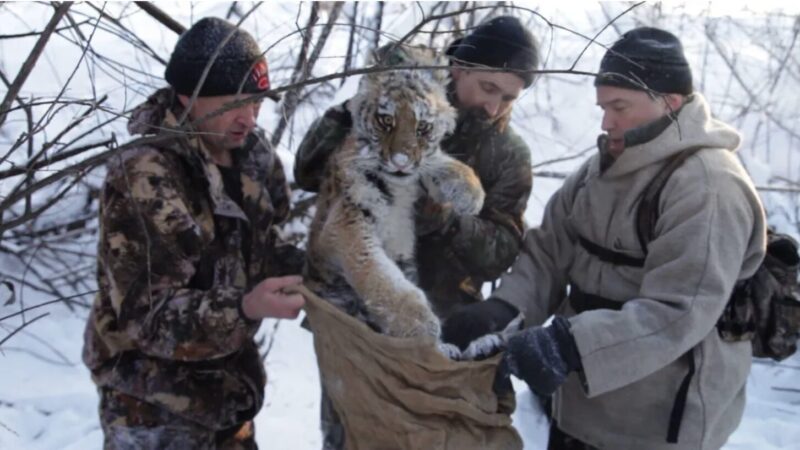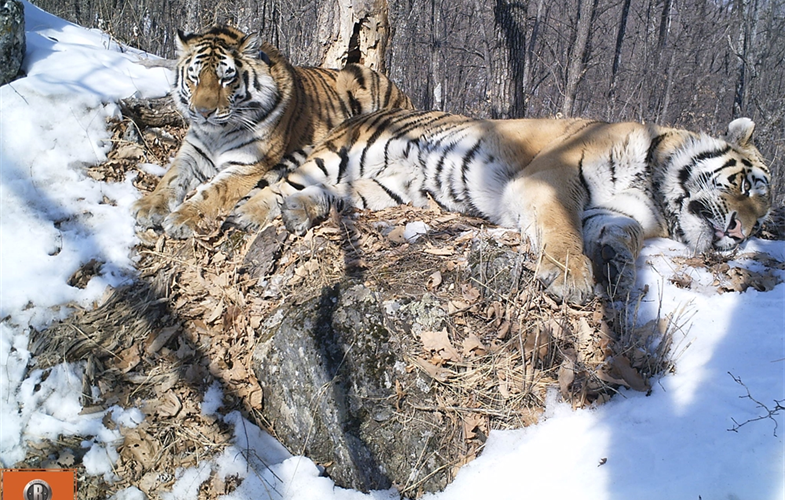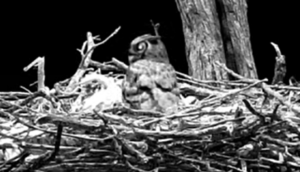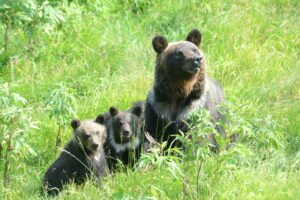Two Amur tigers, separated by almost 200km of Russian forest, have found each other again. The unexpected romance is a glimmer of hope for the critically endangered species.
Conservationists rescued the two tigers, named Boris and Svetlaya, from the Sikhote-Alin mountains when they were just a few months old. Both were orphans and would not have survived on their own in the wild. They were placed into a conservation program with other tiger cubs in 2012 and raised with live prey and minimal human contact. The plan was always to release the cubs at 18 months old.
In 2014, conservationists duly released Boris and Svetlaya in the Pri-Amur region. Sitting on Russia’s border with China, it is historically a home to the big cats. The endangered tigers now inhabit just a fraction of their old range, but experts estimate there are 700,000 square kilometers of suitable habitat for the tigers across Asia.
The project’s main goals were to restore the dwindling populations of Amur tigers and to spread their distribution. For this reason, researchers separated the cubs by hundreds of kilometers throughout the forest and tracked them for over a year.
At this point, an unexpected love story unfolded. Boris, not content with his new lonely life, began walking. He continued for nearly 200 kilometers until he found Svetlaya. Six months later, she gave birth to a litter of cubs.
Rewilding success
It is the first time that rewilding big cats has been attempted. The conservation project (2012-2021) included 13 cubs that had been raised in captivity. Twelve of the 13 proved as capable of hunting as wild tigers and were successfully released back into the wild throughout the Pri-Amur region.

Kolya Rybin, Sasha Rybin, and Dale Miquelle capture the orphaned cub Boris. Photo: ANO WCS
To increase the odds of survival, all the tigers were released during spring, when prey is most abundant. So far, it has been a near-perfect success. Zolushka, another of the female cubs in the project, crossed paths with a male shortly after release. Considering their tiny numbers, this was a huge stroke of luck. Her litter of cubs was the firstborn in that forest in over four decades. In total, six litters have come from the rewilded tigers.
Reason for optimism
“These results indicate that it is possible to care for young cubs in a semi-captive environment, teach them how to hunt, and release them back into the wild. These findings provide a pathway for returning tigers to large parts of Asia where habitat still exists but where tigers have been lost,” said Viatcheslav Rozhnov, leader of the reintroduction project.
Though the project shows great promise, caution is still needed. One rewilded tiger crossed the border into China, into an area where prey is scant. He proceeded to wander into a human area and killed domestic animals, including 13 goats in one night. The tiger has now been placed in a zoo.
The happy ending of Boris and Svetlaya’s story shows that tigers can be successfully re-released into the wild with proper isolation from humans and the opportunity to learn to hunt.
“But this process requires…attention to details in preparing cubs for this journey,” said Dale Miquelle, the lead author of the study.






